Charcoal is one of the most widely used art mediums. Knowing how to make charcoal for drawing and sketching is a handy skill to have. Now you can make your own artist charcoal at home and gain the satisfaction of saying, “I made it myself.” Plus your willow charcoal is of higher quality and more sustainable than anything you can buy at your artist supply store.
Caution – Fire Hazard:
Homeschoolers should have adult supervision for this craft. Fire is involved. Use precaution when starting a fire outdoors. Obey all fire laws and campfire laws in your area. If you are doing this with an open fire, keep a fire extinguisher or source of water close by to extinguish flames and prevent wild fires. If you are doing this indoors in an enclosed wood stove be cautious. Avoid open flames.
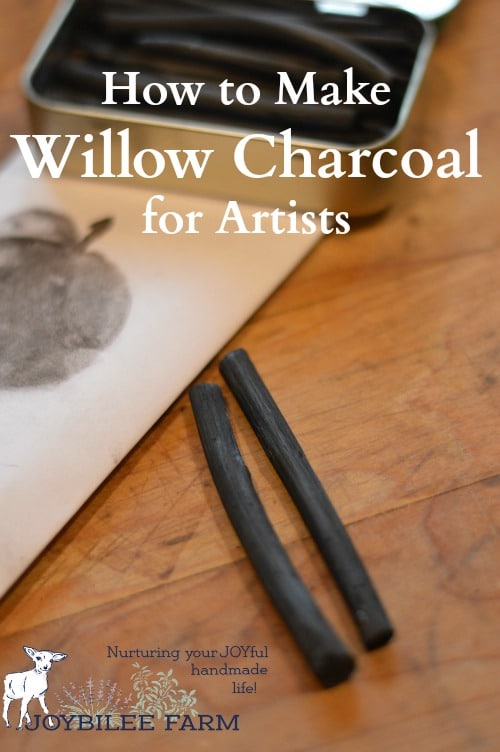
Three types of artist charcoal:
- Powdered charcoal which is charcoal that is powdered into a fine dust. It is used to cover large areas of a drawing. It can be messy.
- Compressed charcoal is powdered charcoal that has been mixed with wax or resin and compressed to form a stick. It is harder than willow or vine charcoal. It is not as messy as powdered charcoal. Since it’s harder it can be sharpened for making fine lines. This gives the artist more control. Compressed charcoal is break resistant and gives darker lines.
- Willow or Vine charcoal is made with sticks from grape vines or willow. It is a softer charcoal that is made without a binding agent. This allows it to be erased more easily than compressed charcoal. This is the kind of charcoal usually used to sketch a painting, prior to laying down colour. It allows for detailed shading.
Willow charcoal
Willow is a very handy plant to have around. It grows quickly, is useful for basketry, medicine, rooting other plants, is a carbon sequester, and makes an excellent charcoal for drawing. If you harvest willow for medicine, you probably peel the bark and are left with several white bark-less willow rods and nothing to do with them. These white willow rods are perfect for making into high quality artists’ charcoal. Although it’s easiest to peel willow rods in the spring, when the sap is rising, you can make willow charcoal year-round.
Wood becomes charcoal when, in the exclusion of oxygen, the flammable gasses and water in the wood are pushed out by heat and consumed. What is left behind is the carbonized wood we know as charcoal. While charcoal can be made using many different methods, making artists’ charcoal requires a fair degree of control over the process, and the ability to pull the charcoal out at any time.
Artists’ charcoal is made using a similar process to making charcloth, which is carbonized cotton or linen fabric. To make willow charcoal, you use a moderately sealed tin to hold the willow pieces. An altoid tin is perfect.
The tin keeps the fire from direct contact with the willow pieces, while still letting the flammable wood gasses escape and be consumed in the fire itself. The tin can be pulled out of the fire at any time and let cool to check on the progress. However, the tin should not be opened when hot, as the charcoal rods could spontaneously combust. Always cool the tin completely before opening.
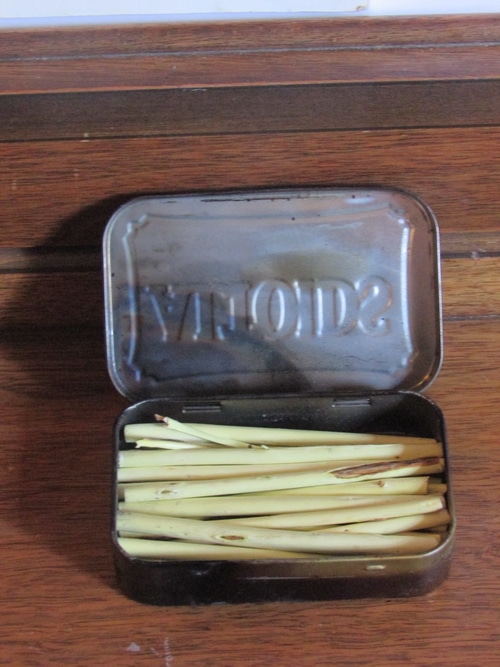
You’ll need:
Peeled willow rods
Pruning shears to cut the willow rods
An empty altoid tin, or other sealable tin
A fire – your woodstove or a small campfire can both work.
Making Artists Charcoal:
The peeled willow rods should sit overnight to let them dry out a bit before starting your charcoaling process. Cut your peeled, and slightly dry, willow rods into lengths that will just fit inside your tin. If you are using an altoid tin, that would make the willow pieces 3 inches long.
Cut enough sticks to completely fill the tin. Even thin willow is surprisingly tough when charcoaled, so don’t be afraid to use the entire length of your peeled willow rod. One or two, 3-5 foot rods, should give you enough willow to fill an altoid tin. The willow will shrink in the charcoaling process, and two full tins of prepared willow will fit into a single tin after they are turned to charcoal.
Once the tin is filled, place it within your fire. This can be an outdoor campfire, or your indoor woodstove. My first experiment used an outdoor pit fire, from which I cut off all oxygen soon after dropping the tin of willow sticks in. The second and third time, I used our wood cook stove which had a handy spot below the chimney for putting the tin box, where the heat would hit it, but the fire wouldn’t. Leave your tin in the fire for an hour or two, or as long as one load of firewood last.
If you want to check on your willow sticks while the fire is still going, you can remove the box, with appropriate safety cautions, and let it cool. It can take an hour for the tin to cool enough to not spontaneously combust. Completely charcoaled willow will be black, and have shrunk by 1/3rd to 1/2. When I had the tin in the fireplace, I simply left it there through one evening fire and took the tin out before starting the morning fire, and I had perfect charcoal both times.
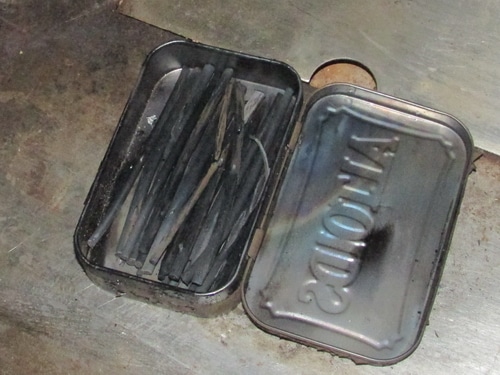
As long as one end of the stick has fully charcoaled, you can use it for charcoal drawing. If one end of your willow pieces is not fully charcoaled, but the other end is, you can either put the tin back in the fire, or use the charcoal as-is. The non-charcoaled end can work as a handle, though this charcoal may have a brown tint. My first batch, that didn’t quite work, was put back through the tin in the woodstove and turned out perfectly after the second burn.
Quality control
I found that, even fully charcoaled, the willow sticks did not leave charcoal on my hands when drawing, unlike the softer commercial charcoal sticks that I had tried to use before. If you make more fresh willow charcoal than you need for art, then it will have no petroleum additives or wood preservative additives, and is perfect for any use where you need clean charcoal. (Note that willow charcoal is not the same as activated charcoal. You need one more step to produce activated charcoal.)
Store your charcoal in a clean altoid tin for easy access, and tidy storage. But do retain your charcoal making tin. When you’ve used up this batch of charcoal, it only takes a few minutes to set up the burning tin to make some more.
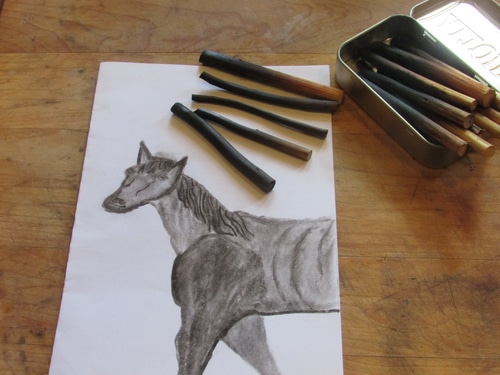
How to draw with charcoal
Charcoal drawing is an exercise in light and dark, shading and the lack of shading that adds definition and delineation to a flat plain.
Unlike other drawing material, charcoal requires a fixative to insure your work of art stays on the paper. This is the charcoal fixative I use. While you can draw with charcoal on regular printer paper, sketch paper or charcoal drawing paper have heavier textures which will improve your drawing experience.
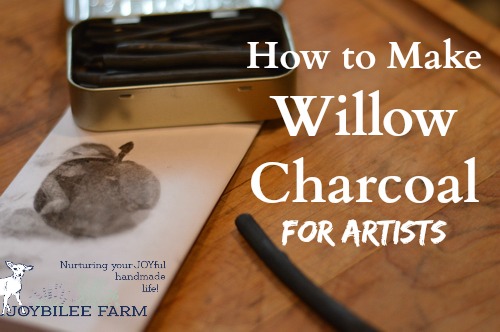
Making your own artist charcoal can provide you with an unlimited supply of high quality charcoal. While the commercial product costs about 50 cents to $2 a stick for quality drawing charcoal. Your own willow is free, and if you already have a fire going, it only takes minutes to set up the tin to start the charcoaling process. And you gain carbon credits because your own willows are carbon sequesters, absorbing more carbon from the air than is given off when they are burned.
Your Turn:
Have you planted a willow tree yet?


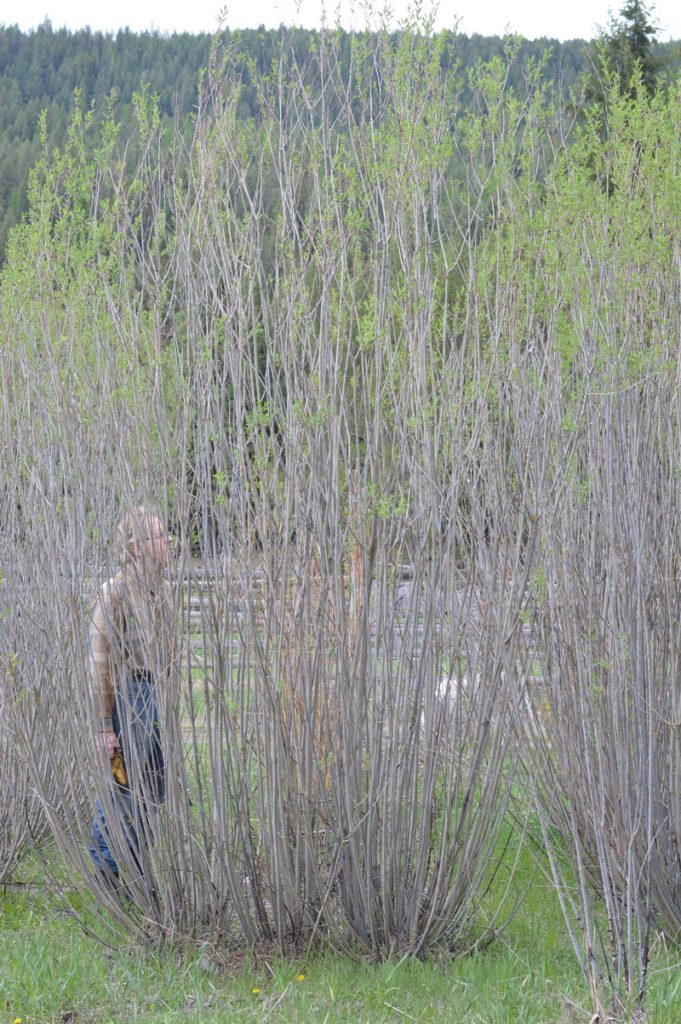

Thanks for sharing your experience.